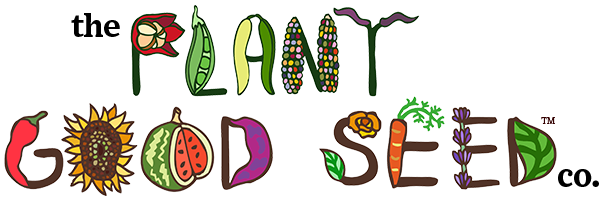
True or Common Comfrey (Symphytum officinale) is a hardy perennial shrub native to Europe and Asia and is highly valued for permaculture/subsistence gardens.
Comfrey has an aggressive, deep taproot, and is considered a valuable nutrient cycler. Comfrey deep roots mine nutrients from the subsoil, primarily accumulating potassium, but also nitrogen, phosphorus, trace minerals and micro-nutrients. These nutrients are pulled up by its roots and concentrated in its leaves. The plant can be cut to the ground two to three times a year, and the leaves used in myriad ways: fermented to make a nutrient-rich tea; added to a compost pile as a compost activator; as animal fodder; as a green manure – or nutrient-rich surface mulch. Comfrey is commonly used as an orchard understory plant to suppress weeds, mine nutrients, and provide a surface mulch around the tree by chopping and dropping the leaves in place. Comfrey flowers are also excellent bee forage.
Substantial foliage forms approximately 90 days after transplanting seedlings. Perennial.
Seeds are certified organic.
True or Common Comfrey (Symphytum officinale) is a hardy perennial shrub native to Europe and Asia and is highly valued for permaculture/subsistence gardens.
Comfrey has an aggressive, deep taproot, and is considered a valuable nutrient cycler. Comfrey deep roots mine nutrients from the subsoil, primarily accumulating potassium, but also nitrogen, phosphorus, trace minerals and micro-nutrients. These nutrients are pulled up by its roots and concentrated in its leaves. The plant can be cut to the ground two to three times a year, and the leaves used in myriad ways: fermented to make a nutrient-rich tea; added to a compost pile as a compost activator; as animal fodder; as a green manure – or nutrient-rich surface mulch. Comfrey is commonly used as an orchard understory plant to suppress weeds, mine nutrients, and provide a surface mulch around the tree by chopping and dropping the leaves in place. Comfrey flowers are also excellent bee forage.
Substantial foliage forms approximately 90 days after transplanting seedlings. Perennial.
Seeds are certified organic.
One of the most important things to know about comfrey cultivation is that the seeds must be buried. Unlike many seeds that are flexible so long as there is water, comfrey seems to not germinate well or at all with light exposure.
Collections: All Products Comfrey New and Returning Varieties
We use cookies on our website to give you the very best shopping experience we can. By using this site, you agree to its use of cookies.
Emails every 4-6 weeks featuring compelling original gardening content, new variety announcements, sales, and event appearances.
